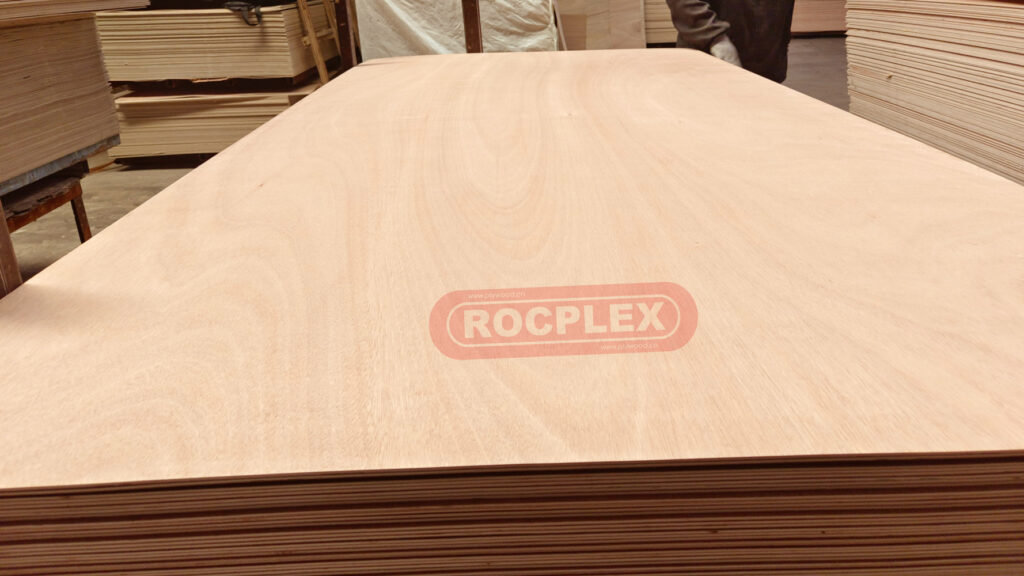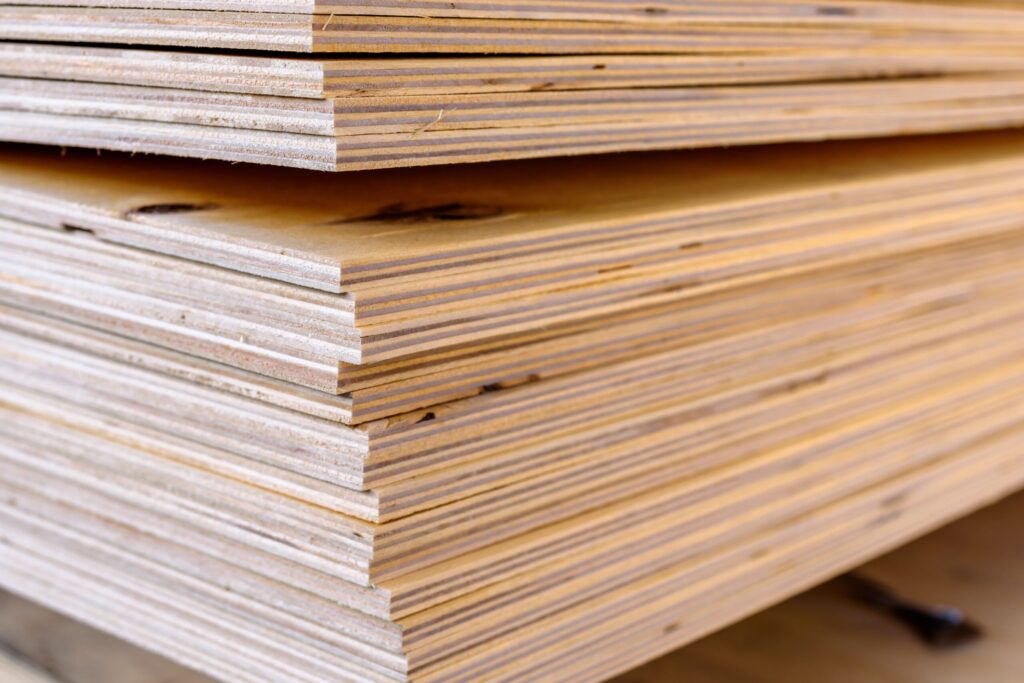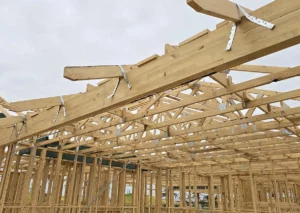Choosing the right formwork plywood is a crucial decision in construction projects, with F14 and F17 grades being the two main options available in Australia. These engineered wood products are vital parts of concrete forming systems, each with its own unique features that make them suitable for different construction needs.
F14 plywood is an affordable choice for residential and light commercial projects. It has moderate strength properties and sufficient durability for standard construction uses. On the other hand, F17 plywood offers superior structural performance, making it perfect for demanding commercial and infrastructure projects where high strength and durability are critical.
The decision between these grades can have a significant impact on:
- Project costs and schedules
- Quality of the concrete finish
- Safety standards in construction
- Overall stability of the structure
To ensure project success, it’s essential to have a clear understanding of what each grade can do. Picking the wrong one could result in expensive delays, safety issues, and potential problems with the structure. When deciding between F14 and F17 plywood formwork options, it’s important to consider the specific needs of each construction project.
Understanding Formwork Plywood
F14 and F17 plywood grades serve distinct purposes in construction, each offering specific characteristics suited to different project requirements.

F14 Plywood Characteristics
F14 plywood presents a cost-effective solution for residential and light commercial construction projects. Its structural properties include:
- Strength Rating: 14 MPa stress grade
- Thickness Options: Available in 17mm and 19mm
- Weight: Lighter than F17, making it easier to handle
- Applications:
- Single-storey residential builds
- Temporary structures
- Short-term formwork needs
- Low-rise construction projects
F17 Plywood Specifications
F17 plywood delivers superior strength and durability, making it the preferred choice for complex construction projects:
- Strength Rating: 17 MPa stress grade
- Thickness Range: 17mm to 25mm options
- Enhanced Features:
- Higher density
- Greater load-bearing capacity
- Improved moisture resistance
- Superior edge protection
Strength and Performance Variations
The key differences between F14 and F17 plywood manifest in several critical areas:
Load-Bearing Capacity
- F14: Supports up to 2.5 kPa uniform loads
- F17: Handles loads up to 3.5 kPa
Durability Factors
- F14 Plywood:
- 3-4 reuse cycles
- Moderate moisture resistance
- Standard edge sealing
- F17 Plywood:
- 5-7 reuse cycles
- Enhanced water resistance
- Superior edge protection
- Greater impact resistance
Construction Applications
- F14 suits:
- Residential foundations
- Garden retaining walls
- Temporary support structures
- F17 excels in:
- High-rise construction
- Infrastructure projects
- Heavy-duty concrete pours
- Bridge construction
The manufacturing process for both grades involves multiple layers of cross-laminated veneers. F17 incorporates additional treatments and higher-grade materials, resulting in enhanced structural integrity and longevity. This superior construction allows F17 to maintain its shape under significant pressure during concrete pours, delivering consistently smooth finishes across multiple uses.
Read more at: Why Formwork LVL Is a Reliable Choice for Structural Strength
Factors Influencing the Choice Between F14 and F17 Plywood
The selection between F14 and F17 plywood requires careful consideration of several key factors that directly impact project success and structural integrity.
Project Scale and Complexity
- Small-scale residential projects often align with F14 plywood due to lower load requirements
- Complex architectural designs with intricate concrete forms benefit from F17’s superior strength
- High-rise construction demands F17’s enhanced load-bearing capacity for safety compliance
Environmental Exposure
- Moisture levels in coastal or high-humidity areas affect plywood performance
- F17 demonstrates superior resistance to moisture-induced warping
- F14 requires additional protective measures in wet conditions
- Chemical exposure from concrete additives impacts durability
- F17’s dense composition provides better chemical resistance
- F14 may deteriorate faster when exposed to aggressive chemicals
Budget Considerations
- Initial investmentF14: Lower upfront costs
- F17: Higher initial expenditure
- Cost-effectiveness analysisLabour costs for more frequent F14 replacements
- Extended lifespan of F17 offsetting higher purchase price
- Project timeline impactF14 might require more frequent replacements during extended projects
- F17 maintains structural integrity for longer periods

Load Requirements
- Dead loads from concrete weight
- Live loads during construction activities
- Dynamic loads from vibration and movement
- F17’s higher strength rating handles increased load demands
- F14 suits projects with standard load requirements
Site-Specific Factors
- Access to replacement materials
- Storage conditions on-site
- Temperature fluctuations
- Construction schedule demands
- Local building regulations
These factors create a complex decision matrix where each element must be weighed against project requirements and constraints. The chosen grade must align with both immediate construction needs and long-term performance expectations.
Lifespan, Reusability, and Cost Analysis of F14 vs F17 Plywood
The lifespan and reusability potential of formwork plywood directly impact project costs and resource efficiency. A detailed analysis of F14 and F17 plywood reveals distinct differences in their long-term performance and value proposition.
F14 Plywood Durability Profile:
- Average lifespan: 4-6 concrete pours
- Reuse capacity: 3-4 construction cycles
- Cost per use: Lower initial investment, higher replacement frequency
- Wear pattern: Gradual surface degradation after repeated use
F17 Plywood Performance Metrics:
- Average lifespan: 8-12 concrete pours
- Reuse capacity: 6-8 construction cycles
- Cost per use: Higher initial cost, reduced replacement needs
- Wear pattern: Enhanced resistance to surface damage
The cost-effectiveness calculation extends beyond the purchase price. F17 plywood’s superior wear resistance translates to reduced labour costs for maintenance and replacement. This grade maintains its structural integrity through multiple uses, delivering consistent concrete finishes across projects.
F14 plywood presents a viable option for smaller projects with limited reuse requirements. Its lower initial cost suits budget-conscious developments where extended lifespan isn’t a primary concern.
Value Analysis Under Different Conditions:
Standard Construction Environment
| Grade Cost per pour (£) F17 | 2.50-3.00 |
| F14 | 1.80-2.20 |
High-Moisture Settings
| Grade Cost per pour (£) F17 | 3.00-3.50 |
| F14 | 2.50-3.00 |
The real-world application of these grades demonstrates that F17’s longevity creates substantial savings in high-volume projects. The enhanced durability reduces downtime for replacements and maintains consistent quality standards throughout the construction phase.
Proper maintenance practices significantly influence the reusability of both grades. Regular cleaning, appropriate storage, and careful handling can extend the serviceable life of formwork plywood, maximising the return on investment regardless of the chosen grade.
Compliance with Standards, Environmental Practices, and Making the Right Choice
Both F14 and F17 plywood grades adhere strictly to Australian/New Zealand Standards AS/NZS 2269, ensuring consistent quality and performance in construction applications. These standards establish rigorous requirements for:
- Structural integrity
- Moisture resistance
- Bond quality
- Surface finish
- Dimensional stability
The production of formwork plywood embraces sustainable practices through:
- Responsible Sourcing: Timber harvested from certified sustainable forests
- Waste Reduction: Efficient manufacturing processes minimising material waste
- Environmental Certification: Products meeting international environmental standards
- Local Manufacturing: Reduced carbon footprint through domestic production
Selecting between F14 and F17 plywood requires careful evaluation of:
- Project ScaleF14: Suitable for smaller residential projects
- F17: Ideal for large commercial developments
- Load RequirementsF14: Standard concrete pressures
- F17: High-pressure applications
- Budget ConsiderationsInitial cost vs long-term value
- Reuse potential
- Maintenance requirements
- Site ConditionsExposure to elements
- Storage facilities
- Handling requirements
The choice between F14 and F17 plywood impacts project outcomes significantly. F17 proves cost-effective for major projects requiring multiple reuses, while F14 serves adequately for smaller-scale applications. The decision must balance immediate project needs with long-term sustainability goals and regulatory compliance.


